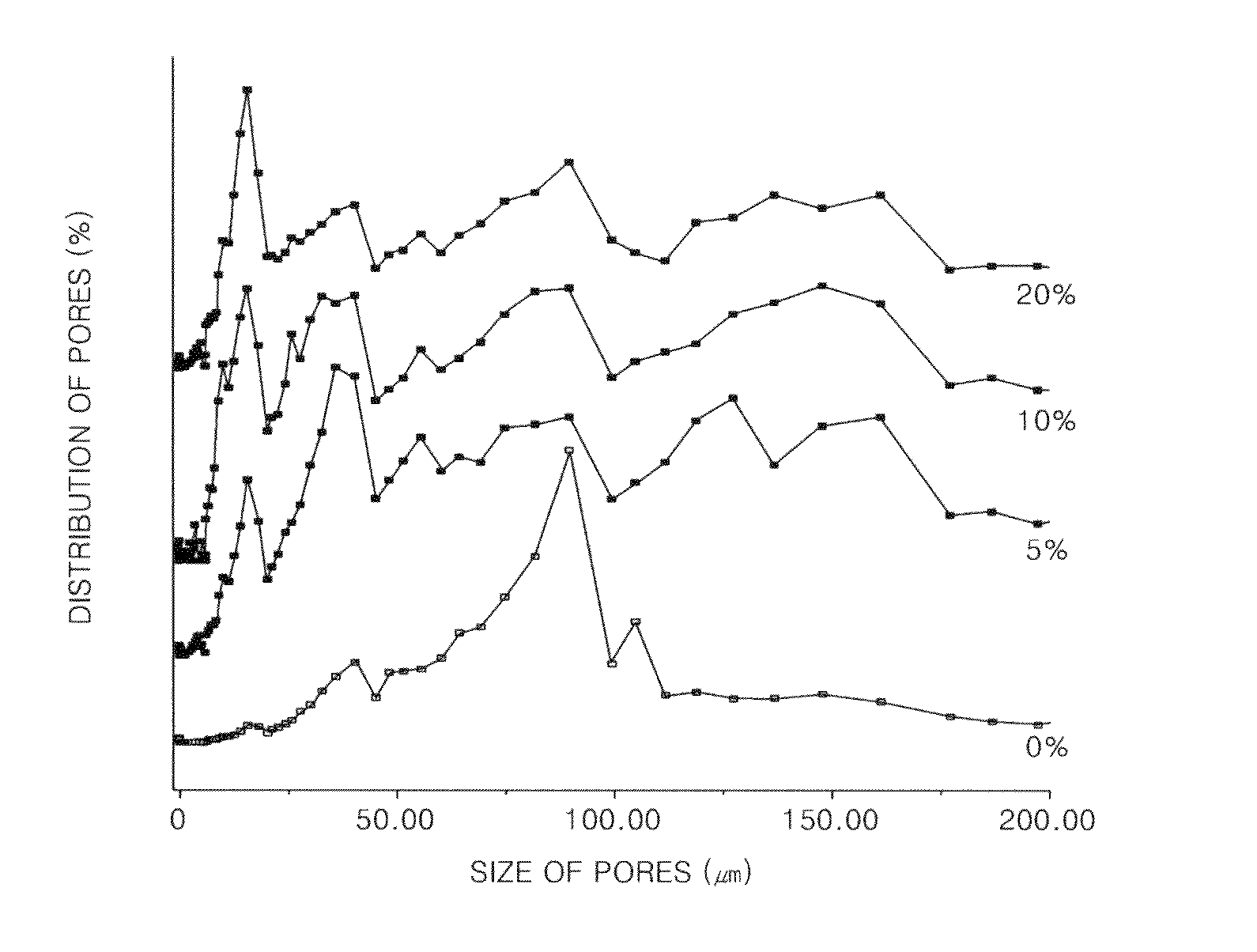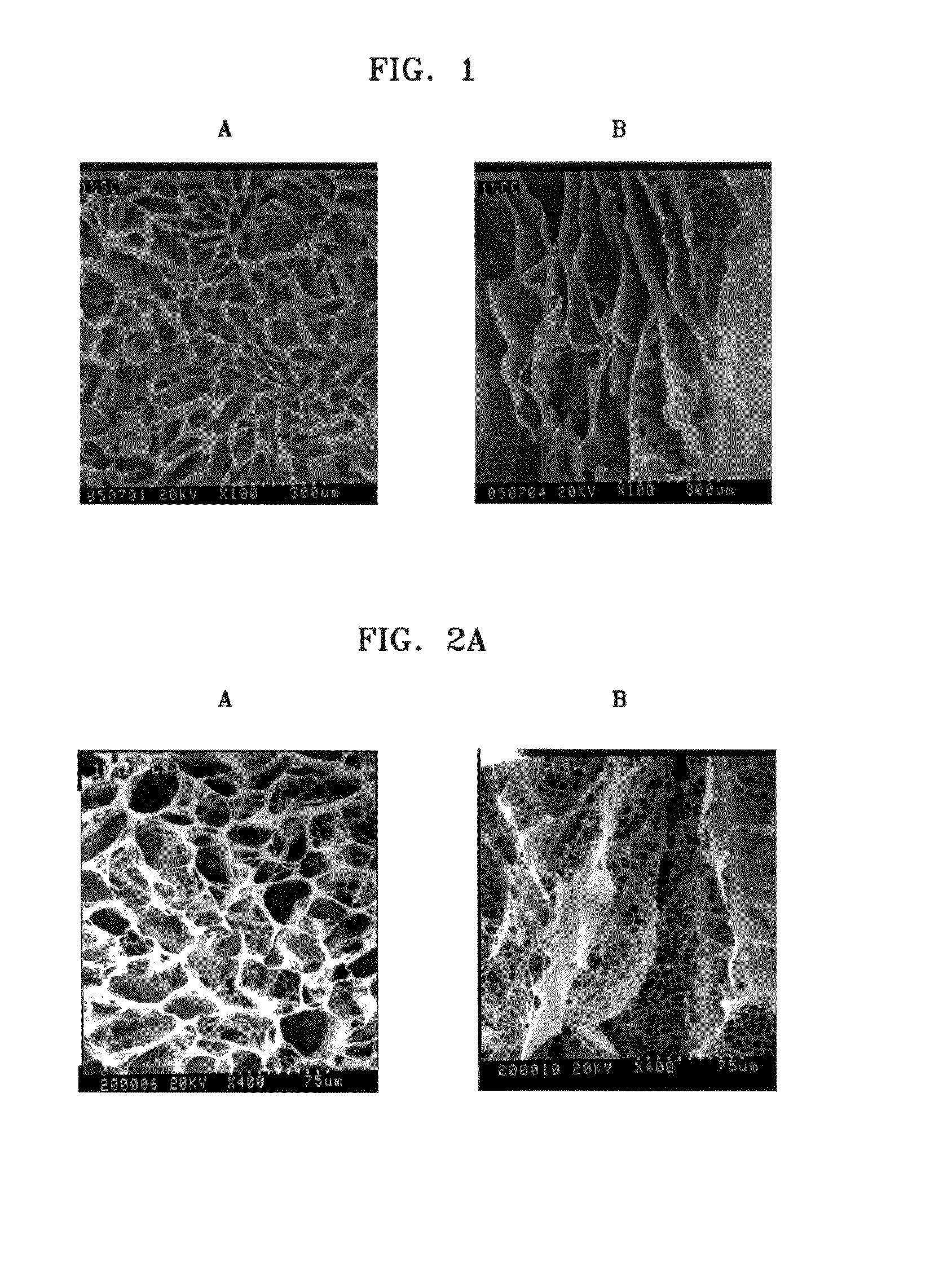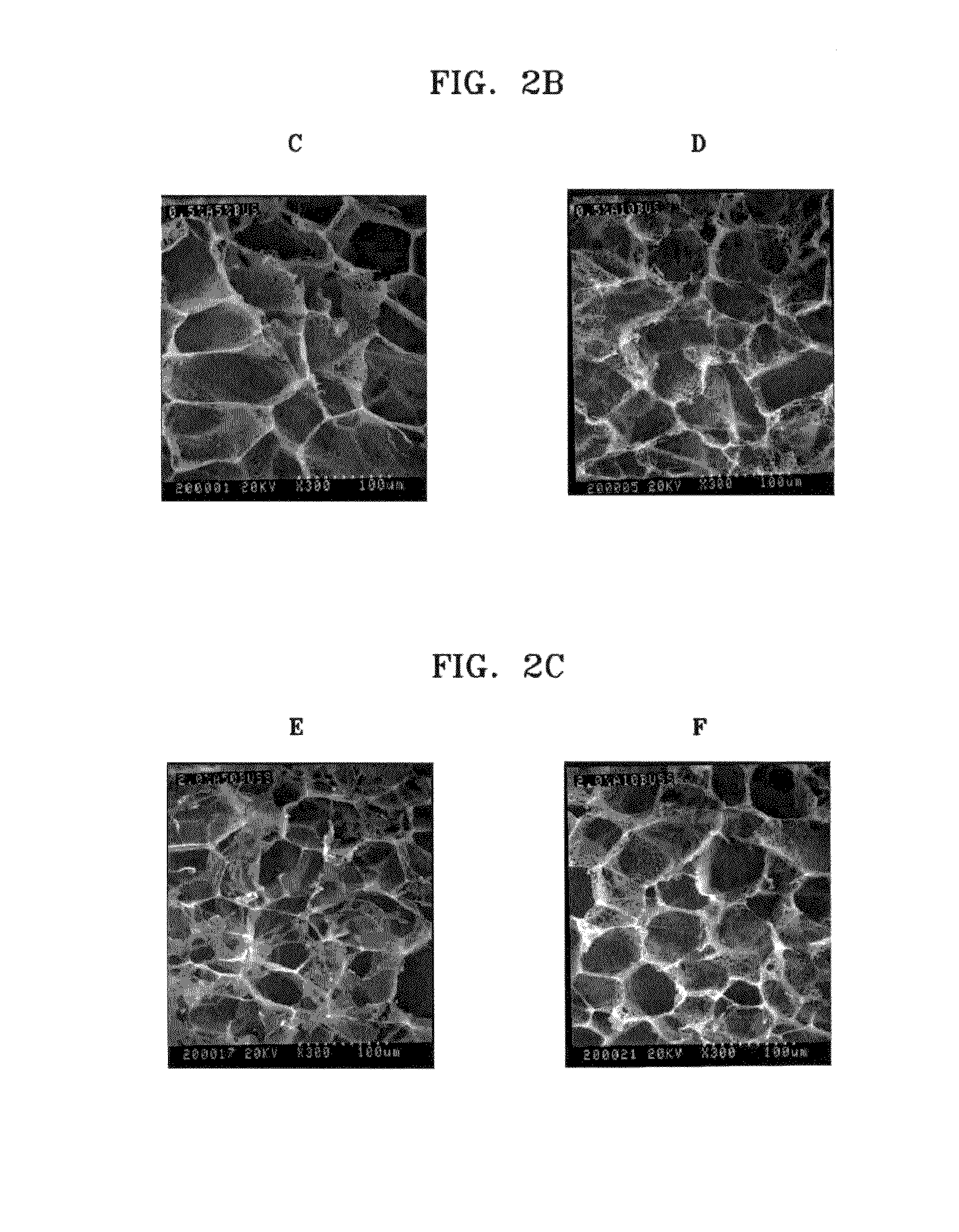Method of producing chitosan scaffold having high tensile strength and chitosan scaffold produced using the method
a technology of chitosan and chitosan, which is applied in the direction of sugar derivates, prosthesis, bandages, etc., can solve the problems of not having high tensile strength or non-uniform pore size, cells are not easily attached to the porous scaffold, and the structure of chitosan is not strong enough to achieve high tensile strength, excellent interconnectivity, and uniform size distribution of pores
- Summary
- Abstract
- Description
- Claims
- Application Information
AI Technical Summary
Benefits of technology
Problems solved by technology
Method used
Image
Examples
example 1
Preparation of a Chitosan Scaffold by Freeze-drying an Aqueous Acidic Chitosan Solution Including n-butanol
[0041]Chitosan (molecular weight: 760,000, degree of deacetylation: 80%) was added to 0.5%, 1%, and 2% (v / v) of aqueous acetic acid solutions to a concentration of 2% (w / v), and the mixtures were stirred at room temperature for 24 hours to obtain homogeneous aqueous acidic chitosan solutions (Reagent A). Then, n-butanol was added to 0.5%, 1%, and 2% aqueous acetic acid solutions to concentrations of 10%, 20%, and 40% (v / v) respectively (Reagent B). 2 g of Reagent A having different concentrations of acetic acid were placed in each of three sheet-shaped molds, and 2 ml of Reagent B having different concentrations of n-butanol were respectively added thereto. The mixtures were reacted at room temperature for 1 hour, then frozen at −70° C. for 24 hours, and freeze-dried again at −70° C. for longer than 24 hours to respectively prepare porous chitosan scaffolds. The prepared porous...
example 2
Preparation of a Chitosan Scaffold by Freeze-Drying an Aqueous Acidic Chitosan Solution Including n-butanol
[0048]Chitosan (molecular weight: 760,000, degree of deacetylation: 85%) was added to 0.1% (v / v) of aqueous acetic acid solution to a concentration of 2% (v / v), and the mixture was stirred at room temperature for 24 hours to obtain a homogeneous aqueous acidic chitosan solution (Reagent A). Then, n-butanol was added to 0.1% (v / v) of aqueous acetic acid solution to a concentration of 30% (v / v) (Reagent B). 2 g of Reagent A were placed in each of three beakers, and 2 ml of Reagent B were respectively added to the beakers. The mixtures were reacted at room temperature for 10 hours, and added drop wise to liquid nitrogen at −196° C. using an injector to obtain chitosan beads. The beads were freeze-dried at −70° C. for 48 hours. As a result, a porous chitosan bead-type scaffold was obtained. The scaffold was immersed in 100% ethanol and washed for 2 hours to remove excess of the so...
example 3
Preparation of a Chitosan Scaffold by Freeze-Drying an Aqueous Acidic Chitosan Solution Including Acetone
[0051]Acetone was added to 5% (v / v) sulfuric acid solution to a concentration of 8% (v / v) to prepare an 8% (v / v) acidic acetone solution. Chitosan (molecular weight: 70,000, degree of deacetylation: 76%) was added to the acidic acetone solution to a concentration of 1% (v / v), and the mixture was stirred at room temperature for 24 hours to obtain a homogeneous aqueous acidic chitosan solution. Then, 4 g of the aqueous acidic chitosan solution were placed in each of three cylindrical molds, and placed in a refrigerator at −100° C. for 48 hours, and the resultant was freeze-dried at −70° C. for 24 hours. As a result, a cylindrical porous chitosan scaffold was obtained. The scaffold was washed three times with 100% ethanol to remove excess of the solvent. Then, the resultant was sequentially washed twice with 90%, 80%, 70%, 60%, and 50% (v / v) ethanol solutions and distilled water res...
PUM
| Property | Measurement | Unit |
|---|---|---|
| size | aaaaa | aaaaa |
| temperature | aaaaa | aaaaa |
| pore size | aaaaa | aaaaa |
Abstract
Description
Claims
Application Information
 Login to View More
Login to View More - R&D
- Intellectual Property
- Life Sciences
- Materials
- Tech Scout
- Unparalleled Data Quality
- Higher Quality Content
- 60% Fewer Hallucinations
Browse by: Latest US Patents, China's latest patents, Technical Efficacy Thesaurus, Application Domain, Technology Topic, Popular Technical Reports.
© 2025 PatSnap. All rights reserved.Legal|Privacy policy|Modern Slavery Act Transparency Statement|Sitemap|About US| Contact US: help@patsnap.com



